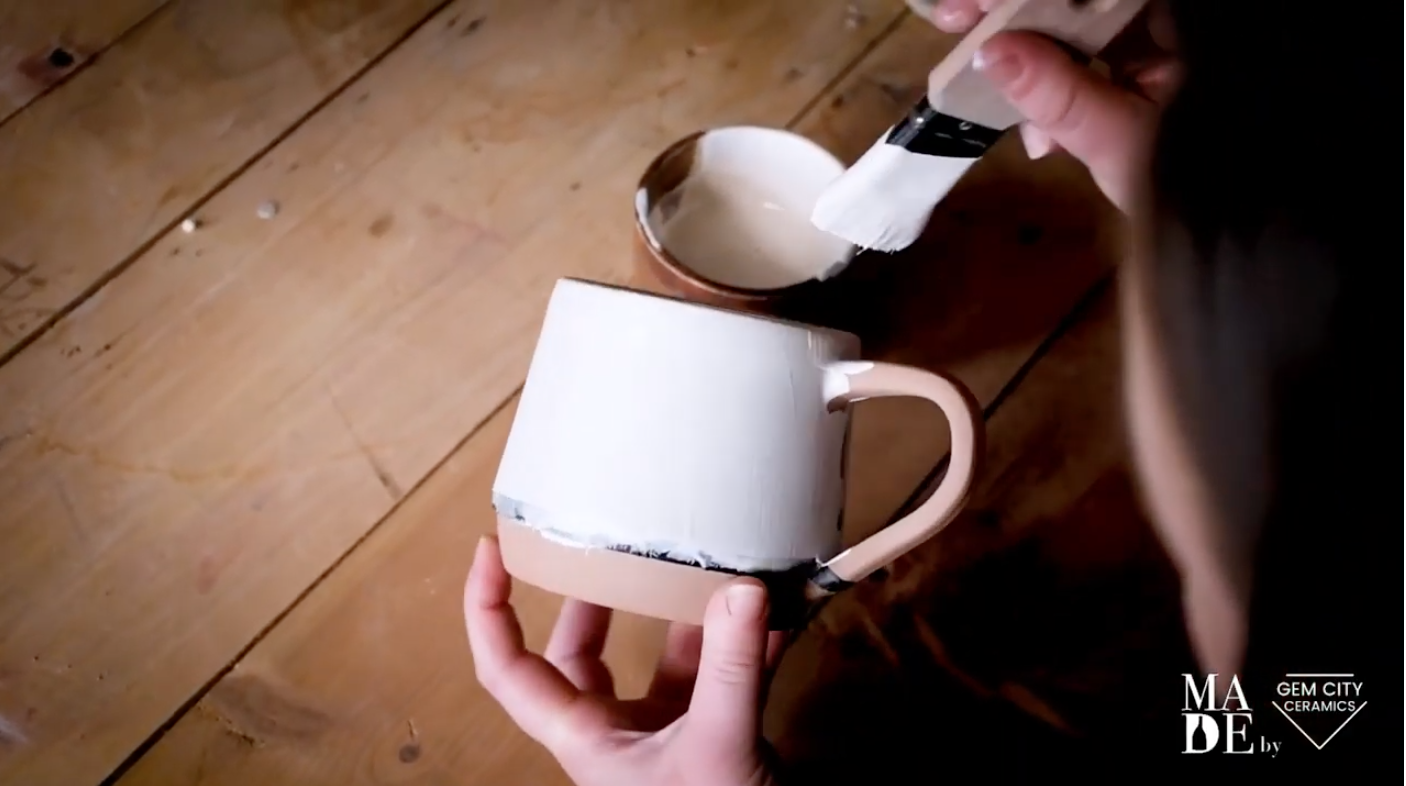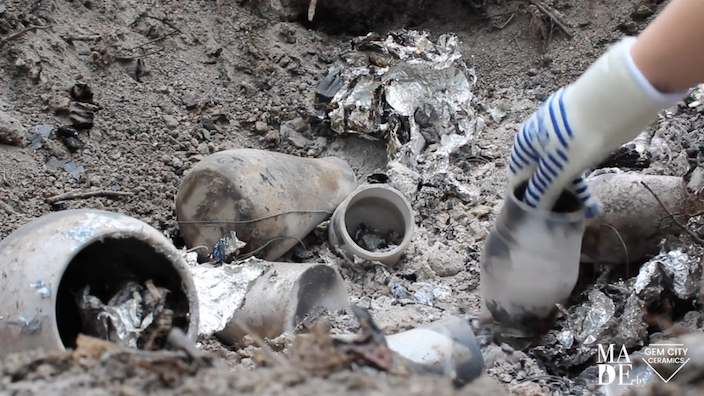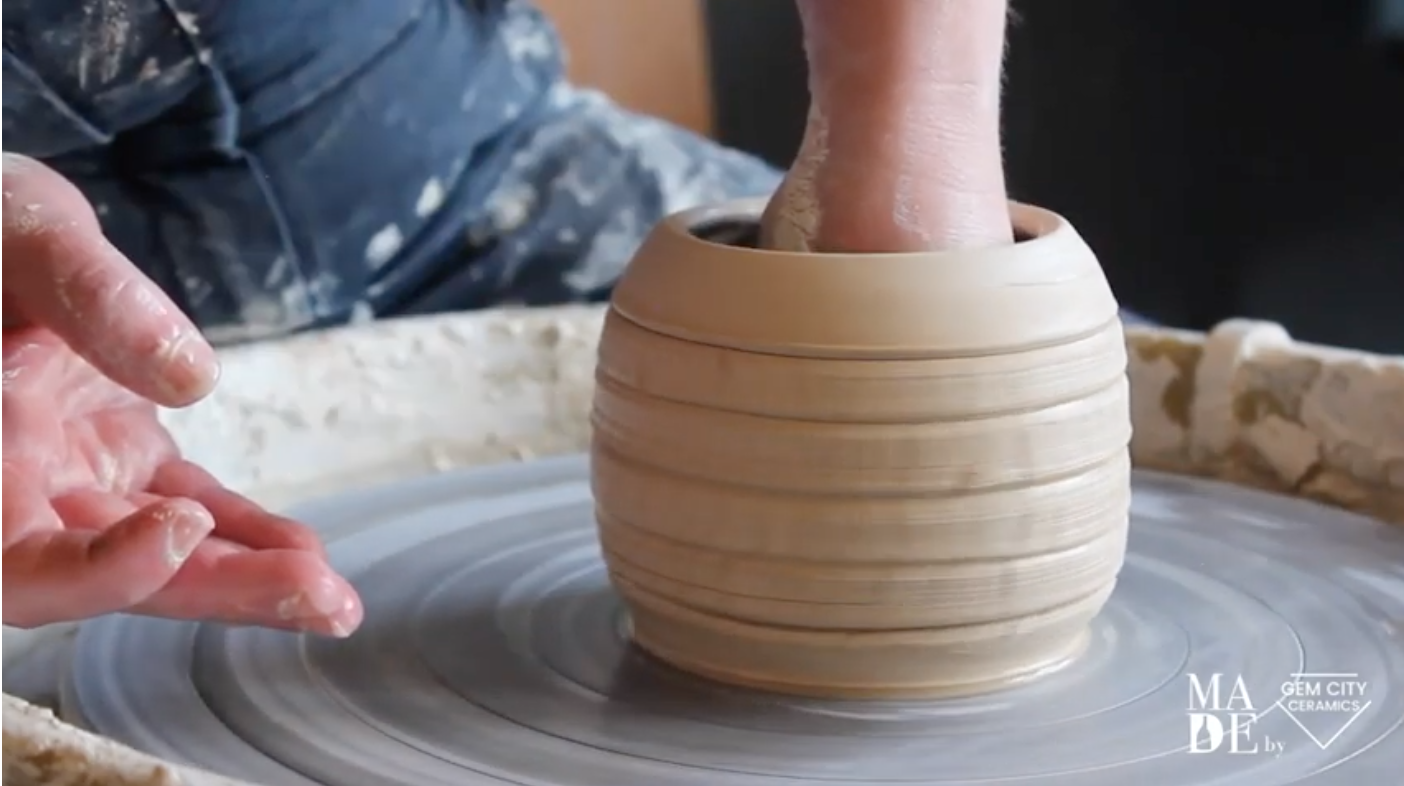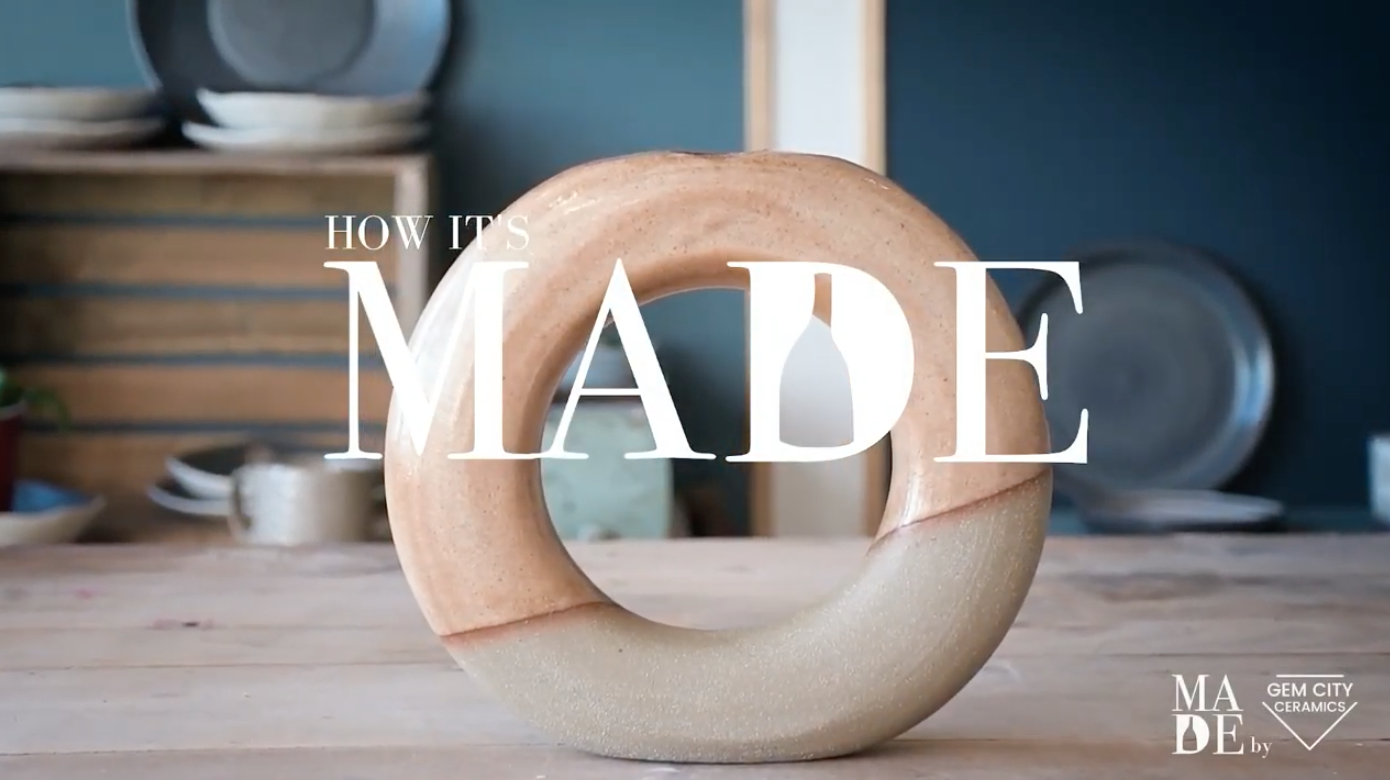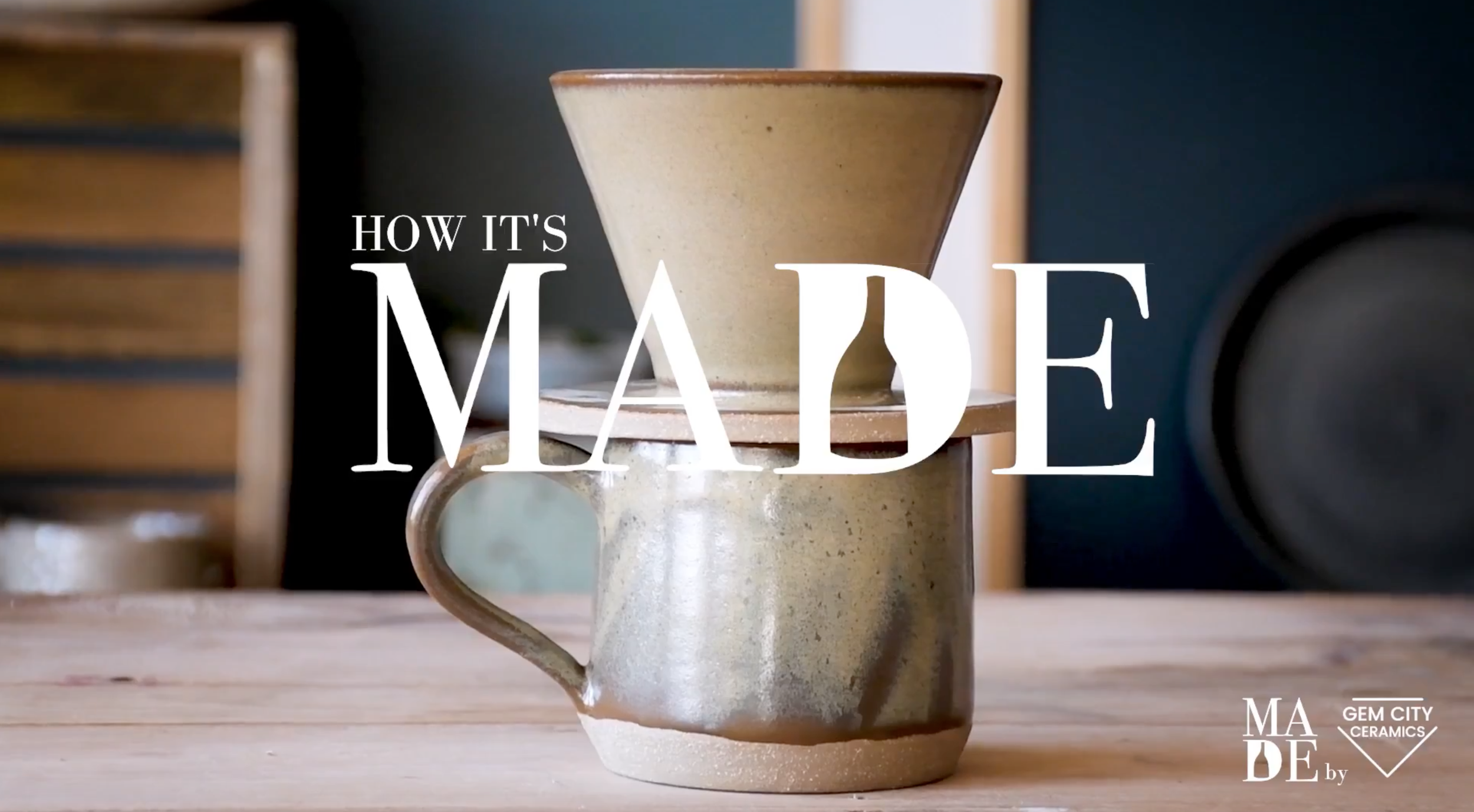Each piece is a product of the resiliency of both material content and maker. Starting its journey as a chunk of mud, it is meticulously formed either on the wheel or by hand into its desired shape. After drying enough to be handled, it is refined with trimming tools and pieced together into its final form. Fired first at 1800 degrees Fahrenheit to a porous stone, it is ready to be coated in glaze. Fired once more at a 2200 degrees, with fingers crossed, the piece is taken out of the kiln ready to join your collection of intentional wares.
Gem City Mug
An ode to our Gem City, Dayton Ohio; the vessel is thrown with sharp lines and a pulled handle to mirror half of a gem. Once fired to bisqueware, the lettering is achieved using a glaze-resist method. Fired once more at 2200 degrees, they are ready to enjoy.
Video: Shirish Amatya
Music: Nathan Mansour
Pit Fired Vase
Pit firing is one of the oldest methods of firing pottery accomplished without the use of electricity. The pieces are first fired to bisquware to allow for safe transport for the pit fire. The pots are wrapped in organic material such as banana peels, avocado skins, and acorns. Copper wire and copper sulfate were used for coloration as well. After being wrapped in foil to contain the colorants, they are carefully placed in a ditch and placed in a bed of soft, wood pellets. A fire is built around the pieces. The fire is fed for a few hours before it naturally dies off leaving hot coals to surround the pieces. A piece of metal is placed over the ditch to cut off oxygen while allowing the pots to continue to pull in color. After 72 hours the pots are completely cool and can be taken out of the pit.
Video: Sarah (the owner gal)
Crackle Mug
Similar to all mugs, the form begins as a cylinder. The walls are thrown thicker than usual as they will be stretched and formed further. Once sodium silicate is applied, a heat gun is used to dry the surface. The final shape is formed by applying pressure from the inside. When this pressure is applied, the dry surface is forced to crack. The inside, however, is still wet, allowing the effect to only occur on the surface and not puncture through the vessel.
Video: Sarah (the owner gal)
Donut Vase
Thrown on its side into a hollow shape, the donut vase is one of the most technical pieces to be thrown on a wheel due to the conjoining walls. Once thrown, it is trimmed to create a seamless spherical form. Flattening one end and opening the other, the vase is ready to adorn your shelf.
Video: Shirish Amatya
Coffee Pour Over
An abnormal shape, a pour over us thrown to include both a base and cone shape to fit a v60 filer. A challenging form to throw at a 60-degree angle, the piece is trimmed to fit a variety of mugs.
Video: Shirish Amatya
Pasta Board
Each pasta board, similar to the pasta itself, is handled with care and detail. The etchings and texture are created and eventually mirrored onto rolled pasta such as rigatoni or gnocchi.
Video: Shirish Amatya
Paint Pallet
After rolling out an extra thick slab of clay, impressions are made in a unique pattern for each paint well. Each impression is then carved carefully so as to not carve through the bottom but be deep enough to hold paint.
Video: Sarah (the owner gal)


